Last Updated on August 17, 2020 by
Of course, we don’t get summer vacations but the national lockdown or the forced summer vacation (i mean work from home) made me reminisce about my childhood days. I remember waiting for the last day of vacation and running home to make a batch of Rasna. Pouring the powder and the syrup from the small glass bottle gave me so much joy and it marked the start of my summer! Over the years my summer season drinks changed and I only noticed it now as to how many I consume in a day. The list is aplenty – Lemon sharbat, Spiced buttermilk, Kokum sharbat and aam panna are some of them which I consume daily in summer. This made me think about other states, regions and homes and what they consume to beat the heat. Summer drinks in India are as staple as mangoes and every Indian household has their own versions and varieties.
Sharbats are the best summer drinks in India and savoured by young and old. Also known as shorbot, serbat or sherbet it finds its way across Western Asia and is prepared from fruits or flower petals. It is a sweet cordial and usually served chilled in a concentrated form or diluted with water to create the drink.
Table of Contents
Leh Berry juice from Ladakh
A couple of years back when I visited Manali – Leh road trip for the first time in summer (summer in Ladakh is from June to September) I was intrigued to find orange coloured berries across the highway in some areas. In discussion with the locals, I came to know its uses and health benefits. Leh berry also is known as Seabuckthorn and grows in other cold and dry regions of India like Garhwal in Uttarakhand, Spiti and Kinnaur in Himachal Pradesh and parts of Sikkim and Arunachal Pradesh. The fruit is exceptionally resistant to extreme winters as it is a wild shrub and thrives along riverbanks and hill slopes.
Leh Berry juice supposedly has disease-fighting abilities and reduces mountain sickness if consumed by people. It supposedly improves the memory, strength and fitness of the local community.
I gorged onto these sour and sweet berries and also shopped for some ready-made bottles to carry back home.
Kokum Sharbat from Maharashtra – My favourite summer drinks in India
Kokum Sharbat instils a lot of childhood memories for me and my trips to Pune. Pune trip meant taking stuff back to Gujarat which was not so easily available. The many forms of Kokum which were extremely important to my mom were one of them. Kokum is a tiny, round-shaped, purple coloured fruit found in the Western ghats of India. Kokum always found its way in my home as dried kokum to use in curries (dal or amti), kokum liquid (agal) for making Sol Kadhi and as liquid concentrate form for making Kokum Sharbat. It is equivalent to Falsa Sharbat in Gujarat.
This chilled, tangy summer drink has many health benefits, especially in summer. I enjoy this drink from my comforts of home in Ahmedabad while reminiscing about my childhood and summer vacation.
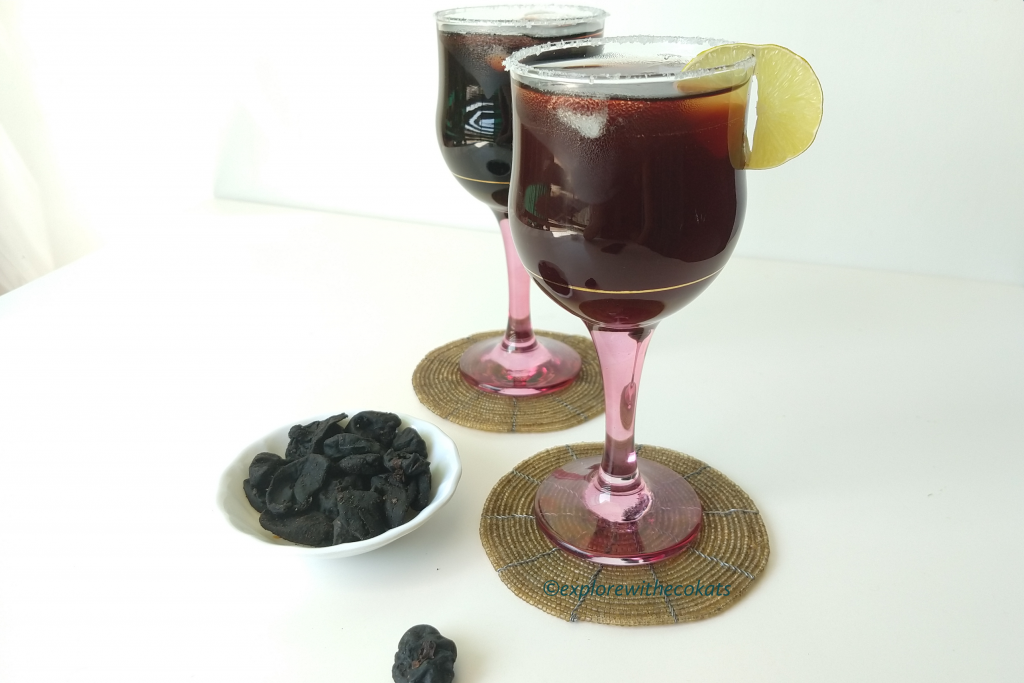
Falsa Sharbat from Uttar Pradesh
Living in Vadodara I never knew what Falsa fruit was and was introduced to me by my mother in law in Ahmedabad. In Spite of hailing from Uttar Pradesh, the fruit is easily available for sale in most Indian states during summer. Falsa berry looks similar to blueberries and is sweet and sour in taste. It is very healthy and cooling for the body. Having this fruit regularly during summer is very beneficial to combat the heat.
At home, we make fresh Falsa Sharbat by crushing the berries and adding spices such as black salt, ground pepper, roasted cumin seed powder and mint to enhance the taste.
I asked some of my friends and bloggers to contribute their memory, experience or a recipe about what their best summer drink in India is. I got fantastic responses which were unheard of. Here goes the list:
Aam pora’r shorbot or Aam Panna from across India
By Mohana Das of Two-Together
To beat the sweltering heat of Kolkata’s summers, my father would make large batches of aam pora’r shorbot on the weekends. Tangy and sweet, with a sprinkling of the black salt that he would grind in a massive mortar and pestle, the drink felt like an elixir. We would take our ice-cold glasses, climb up the stairs to the terrace and sip and watch the sunset. The evening breeze from the Ganges would cool our sweaty bodies. As the daylight dimmed, the sound of conches being blown for evening aarti would drift from households.
This cool, Indian summer drink starts with fire. Aam pora literally translates to burnt mango. What makes the aam pora’r shorbot special is the smokey, charred flavour imparted to the tart, unripe mangoes by grilling. Grilling on charcoal is the best but you can do you over an open flame on your stovetop too. Once cool, carefully peel off the skin and extract the pulp. Throw it in a blender with some sugar, black salt, ground roasted cumin, some water, and a sprig or two of mint. Chill for a few hours. Serve over ice cubes. Not only does it quench thirst but, as my father would remind us each time we sat sipping a glass of the lovely green drink, it is also a source of sodium and iron and a good source of Vitamins B and C.
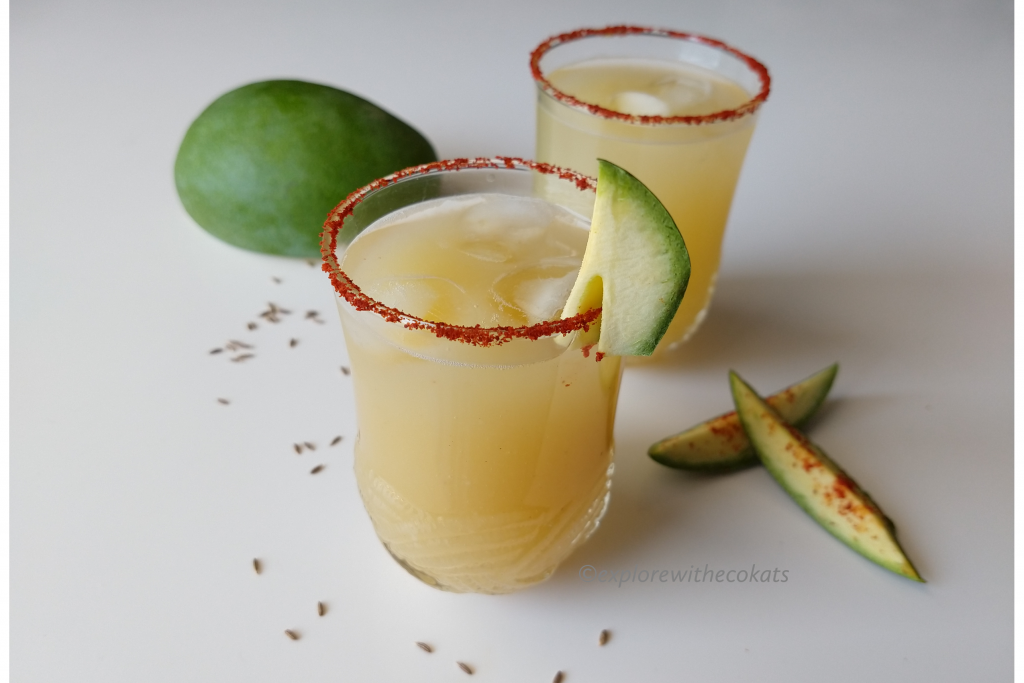
Saunf Sharbat (fennel seeds Sharbat) from Gujarat
By Mayuri Patel of Fernwehrahee
Summer in India is at peak and traditional coolers are the perfect way to beat the heat of sizzling summer! Summer in India is mostly associated with Mangoes and items related to mangoes. But Sharbat’s are also a good and healthy chiller choice. Saunf Sharbat is widely consumed in Gujarati homes during peak summer. I vividly remember my childhood days when my grandma used to make it for us.
The grounded fennel seeds, chilled water and powdered sugar are mixed together and lemon is added to make it flavorful. The characteristics of fennel seeds act as natural coolant and lemon act to stop dehydration in summer. Today also at my home, fennel seeds sherbet is served in the afternoon to beat the peak heat of the day.
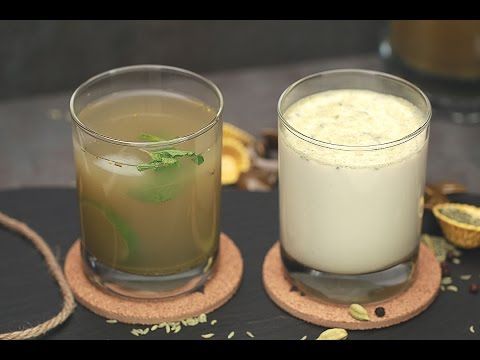
Amla Sharbat from Maharashtra
By Siddha Kulkarni of Sid Meets Nik
If there is one such berry fruit which can be given the tag of ‘wonder berry’ or can be called a ‘powerhouse of nutrients’ then it has to be none other than Amla, Awla or Indian gooseberry. Amla is rich in antioxidants, an excellent source of Vitamin C and E, its immunity-boosting, anti-ageing, and known to prevent cancer. It is good for skin, nails, hair and overall working of the body as it helps in cell repair.
The fruit is normally eaten raw or pickled or used as a spice in different dishes at different places all around India but in Maharashtra and especially in Pune we make homemade sharbat out of it. This amazing, energising drink has all the goodness of this fruit in its original form and that’s why it is best consumed in Summers.
Recipe of Amla Sharbat for summer drinks in India
Cut the Amlas in slices and then churn it in the mixer grinder to make a fine mixture. Strain and Sieve the mixture to get the rich extract of Amla juice. To this extract, add sugar syrup according to taste. A dash of green food colour to this concoction makes it look very refreshing. Preserve this concoction year long in your refrigerator.
Before serving, add water, ice and salt (optional) and tadaaaa…..your drink is ready. Alternatively, to cut sugar, one can add jaggery.
This drink has a special memory as I made it the first time at home with my dad. We experimented with the tastes and added lemon and ginger to make it more healthy and tasty. This drink had become our signature beverage for many days after that as everyone coming home served it and they liked it equally.
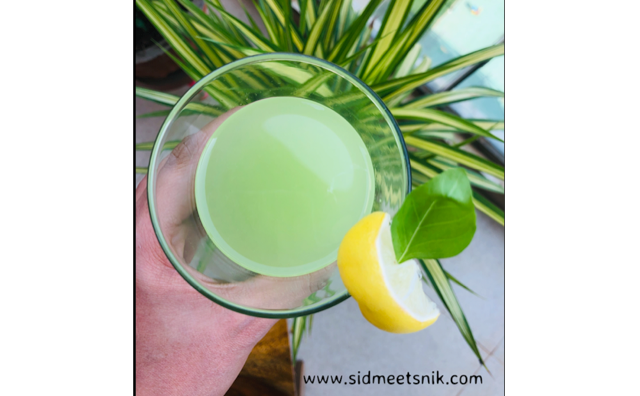
Campa waala Doodh from Delhi
By Stuti Arora of Stuti’s page
My memory of Campa wala doodh is because my grandmother used loved this quirky summer drink. My grandfather was not allowed to have this, so every time he would go on a walk (usually sent by the grandmother to fetch some groceries), she would sneak in with me and, we would make and enjoy this cheat drink during the summers. It is a pampering tale for me.
Recipe of Campa waala doodh
Add coke and milk (half and a half), some sugar and serve chilled.
Spiced Buttermilk from Andhra Pradesh
There is a famous dialogue, “You can take away Indians from India but cannot take their habit”
This is apt for my love for buttermilk.
One of the best summer drinks in India or the Indian coolant is the other name I would like to give because every part of the country is made with a small twist and undoubtedly the tastiest cooling juice. Masala chaas, Masala Majjika, Masala Majjike, Masala Buttermilk (name of this refreshing juice in all languages I speak). It is one of the most healthy summer drinks in India.
Recipe of Andhra style spiced buttermilk
Ingredients
1 cup curd
1 pinch salt
1 pinch jeera powder
1.5 glass water
1/2 chilly
5-6 curry leaves
1 tablespoon lemon juice
Procedure
Blend all the ingredients in a food blender.
Or
Beat curd with water. Make a fine paste of chilly, curry leaf. Mix all in a glass of buttermilk.
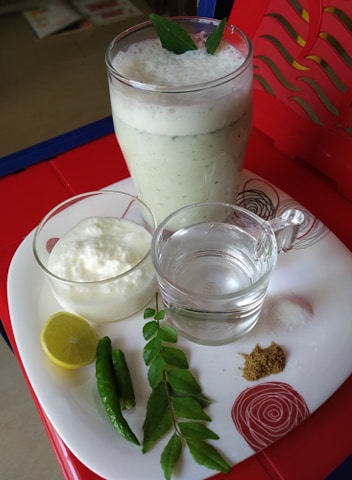
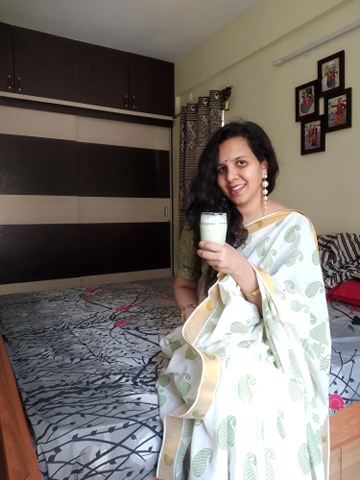
Nannari Sharbat from Tamil Nadu
My memory of summer drinks in India goes back to my childhood. As kids, we used to wait for rocks to be blasted in our estate to dig out a type of root called Nannari roots to make Nannari Sarwath or Sharbat which was the precursor to colas in the Malabar region. I remember my mum cleaning and boiling the root and adding caramelised sugar for colour and storing bottles of the extract to be relished with a dash of lime. Nowadays the roots are available in Ayurvedic shops and the concentrate is also available for ready to drink. In the seventies, my Malayasian friends used to bring jerry cans of Sarasapherilla syrup which used to taste the same.
Thandai from Uttar Pradesh
By Mayuri Patel from Fernwehrahee
A very cooling Milk that delights the senses- Thandai! Thandai is refreshing milk made with sweeten Milk, saffron, Spices like cardamom, Pepper and garnished with Pistachio and almonds. Thandai is most famous in North India but in Gujarat one can get the Thandai mixtures in superstores too. Traditionally Thandai is associated with Mahashivratri and Holi festivals especially famous sweet in Varanasi. But this soothing milk refresher is the perfect idea of summer drinks in India.
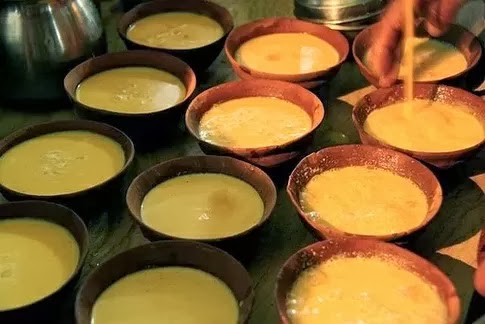
Cold brew Hibiscus tea from Madhya Pradesh
There is a quote by the artist Andy Warhol that goes ” Let the little things that would ordinarily bore you, suddenly thrill you.” The lock-down made me do exactly the same. Being in one space for too long, I started paying attention to the humble Hibiscus plant in my balcony. Hibiscus is so nostalgic to my memories of Indian summer, yet forgotten today because of the “busy” life I was leading. This little plant gave bright red flowers almost every other day and I started reading up on what one could do with them. As it turns out, a lot! I ended up making candles, hair-packs and multiples batches of fresh cold brew Hibiscus tea. Sharing the process below, if you’d like to make some for yourself.
Recipe of Cold brew Hibiscus tea
Collect some Hibiscus flowers. You can also add some tulsi leaves if you like. The hibiscus has a very mild flavour but it adds an amazing freshness to the drink. Take around 4 cups of water for 15gm flowers (10-12). Soak them in water for 24 hours, store this in the fridge or any other cool place. Strain it the next day and add honey and lemon as required.
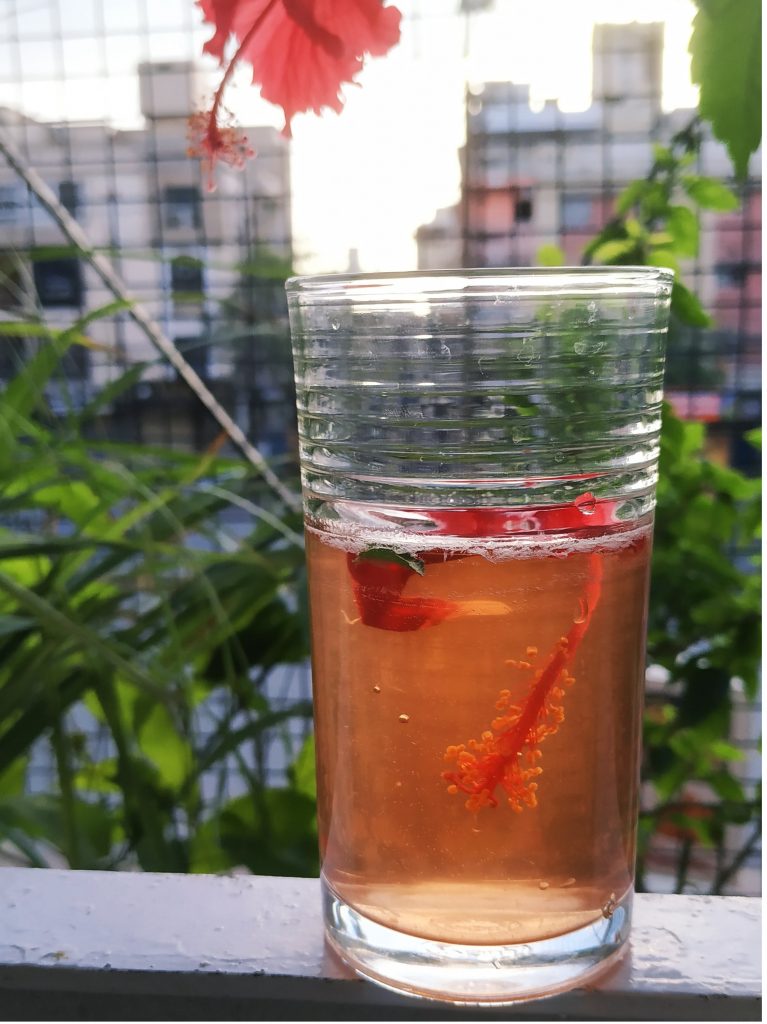
Pepsi from across India
By Rashmi Badami of Rashmi Badami Blog
As soon as I hear the word ‘Pepsi’, it creates immense joy. Those memories form an important part of childhood days. These WFH days directly transported me to my childhood, the period of annual vacation, for which, we would wait for an entire academic year. It was worth the wait. By the time, results are declared, our packing would have also been reached its optimum. Our everyday schedule consisted of only two things – eating and playing. Days during summer are generally longer, but we ensured that our day was long enough to play, eat, go to market with grandmother, go to the bank with grandfather come back thirsty and gulp loads of homemade lemon juice or buttermilk, kulfi, jamun and one special item – “Pepsi”. Our only intervals used to be for quenching our thirst. Meals used to be the least of our priority.

Dab Sharbat from West Bengal
By Madhurima Chakraborty of Orange Wayfarer
Come summer, one of the most iconic drinks that reign the Bengali households is “Daber Shorbot”, a green coconut sharbat served at this old and reputed cafe named Paramount, College Street, Kolkata.
Paramount boasts of being the oldest sharbat parlour of Kolkata, which has been serving a wide range of sharbat since the days of British Raj. One of the bucket list attractions of the city, Paramount sells its unique mix of Sharbat as syrup nowadays.
Paramount has been hosting who’s who like Netaji to Arundhati Ray and Ramakrishna and every eminent Bengali since the time of Bengal Renaissance. The famous Daber shorbot of paramount has been reported across multiple magazines and publications and made way to Bengali households as well.
You can use diced green coconut slices, and add that with syrup, coconut water and ice. At home, I have seen Dida mixing in a bit of tamarind pulp in the drink as well. To improvise, you may also use the zest of Gondhoraj lemon.
Daber Sharbat stirs in a bit of life in otherwise dehydrated Bengali households, especially during scorching summer afternoons.
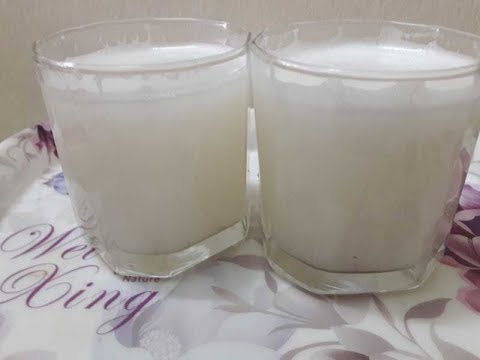
Ambrosia Sharbat from Uttarakhand also Buransh Sharbat from Himachal
By Suman Doogar of Nomadic Shoes
After a tiring trek in Uttarakhand when we reached our basecamp, our guide opened his bottle and started pouring out a red-coloured drink into glasses. At first, I thought he was giving us roohafza. But the moment I tasted rhododendron juice, locally known as Ambrosia and Buransh in Himachal I was taken by its tangy yet subtle taste. Since that day, whenever I visit Uttarakhand, I always look for Rhododendron Juice. This refreshing juice has been one of my favorite summer drinks. This fragrant juice also possesses many health benefits and is used in the treatment of menstrual problems, constipation, diarrhoea, asthma, diabetes, blood pressure etc.
Recipe of Rhododendron Juice
Ingredients:
4 cups Water
½ cup Sugar syrup [adjust as per your taste]
1 kg Rhododendron flowers
4 Lemon [optional]
2 cups of fresh rose petals
Method
1.) Clean the Rhododendron flowers by removing the pistils and washing the flowers with cold water.
2.) Simmer water in a big pan for 3 minutes and add the washed flowers gradually. Let it boil for ten minutes.
3.) Add rose petals and let it boil with the flowers for 3 minutes.
4.) Switch off the gas and let it cool for 30 minutes, then sieve the flowers and separate it from the rhododendron water.
4.) Add sugar syrup to the boiled water and mix.
5.) Serve it chilled with a dash of lemon juice for a tangy and refreshing summer drink. You can adjust the taste by mixing it with additional water or sugar or lemon as per your liking.
6.) You can store Rhododendron juice for up to 4 weeks.

Rose Sharbat from across India
By Hiral Pandya of Traveller by Birth
” Summer is synonymous with the rose for me. As soon as the temperature starts soaring, I begin using rosewater for my skin and rose syrup in my drink. Since I was little, my mom used to take me for Ice Gola (Shaved ice on a stick) during summer vacation evenings and the only flavour I ever wanted to be Rose. It’s magenta pink colour always made me happy as a child and even now. Rose syrup is used in various ways, with water, milk, lassi and also Falooda.
My all-time favourite is rose syrup in chilled water. My summer afternoons are still spent with this pink liquid reviving my inner child. This special one, Rose on the rocks, was invented by my dad after whisky on the rocks. Instead of gulping the whole sorbet glass in a minute, he created this slow drink. He would put five-six cubes of ice in a glass, add splashes of rose syrup, throw in a stirrer and done. When I was in dental school, my exams were always in May, so before that, I had my study sessions at home. My dad used to make two glasses of this drink for both of us and then sit with me to give me company. As and when the ice melts, the rose syrup mixes with water and slowly makes a sorbet inside. I used to stir, slurp and study.
All these childhood memories of mine with roses make me nostalgic and also contented from within. Roohafza, as aptly named by the Hamdard company, meaning refreshing the soul. It does what it means.”
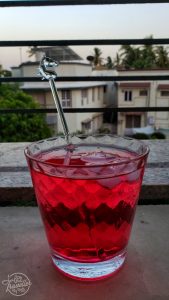
Cucumber Sharbat
By Ishan Karanjgaonkar
A cooler or Sharbat is a sweet, often fruity and/or bubbly mocktail for used as a refreshing drink, especially for summers. Coolers always tend to freshen up a person due to the presence of mint in them. Coolers or sharbat can be consumed anywhere, anytime and by anyone and are the best summer drinks in India. What makes them distinct from a mocktail is that mocktails do not contain fruits. The basic content of coolers is water which makes it distinct from a juice. Also, primary fruit and then a secondary fruit is added.
The most consumed cooler is the cucumber sharbat, which mainly consists of water, cucumbers, lemons and sugar. Instead of coolers, some people prefer alcoholic and/or carbonated beverages such as cola or many types of cocktails. They both have high caffeine/alcohol content, which removes their health quotient and therefore are not as healthy as coolers.
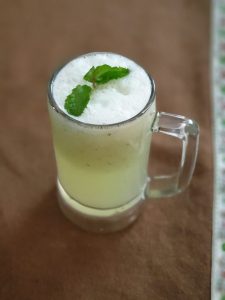
Bael Sharbat
By Srishti Singh, Photo by Ruchi Shahi
Wood Apple, bengal quince, stone apple or Japanese bitter orange, locally known as Bael in the northern India has a very strong place in my childhood memory. Just think of plucking the fruit yourself and then making it into a refreshing drink together with everyone else at home. Believe me, it was super cool! I guess this is one of the privileges of coming from a small city.
I remember being in our Gorakhpur home, with a huge Bael shrub in the back of our courtyard. The heavy round-shaped fruits fell automatically once they were ripe (few even at nights with a loud bang on our garage shade) or were even plucked fresh, once turned yellowish. Though cracking the hard skin of the fruit was a task, the yellowish-orange soft pulp could be easily removed. The pulp was then mashed and water was added to make it thin. The mixture was then strained to take out the seeds and not all the healthy fibers that make the sharbat rich in antioxidants. Was served fresh with ice cubes or refrigerated for few hours to have it in the evening when my father returned from work.
It has been years since I have tasted the Sharbat, but I am sure North India has it every day to beat the heat. Bael also helps in digestion, getting rid of constipation and in control of diabetes. It is healthy for our skin and hair too.
So during summers don’t forget to cool yourself up with this exotic and seasonal sharbat whenever you are travelling to that part of India. You can get bael fruits and make the sharbat easily at home or try it at a local stall. This is indeed one of the best summer drinks in India.
Not to forget, this is the same Bael whose leaves (known as bael patra) are used to pacify Lord Shiva.
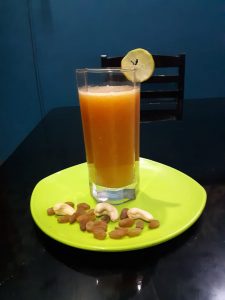
Hope this Summer drinks in India post made you remember your summer vacation days or brought back memories from school or made you realise just how important that glass of cool beverage you have every day, is!
What are your go-to summer drinks? Let me know in the comments below.
Pin this post!
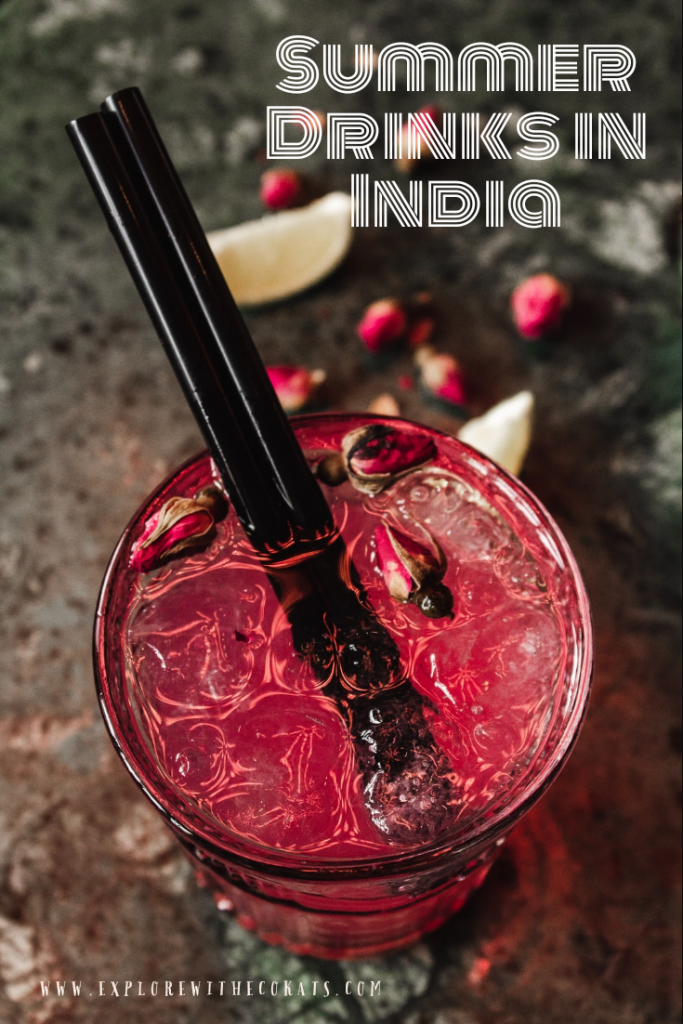
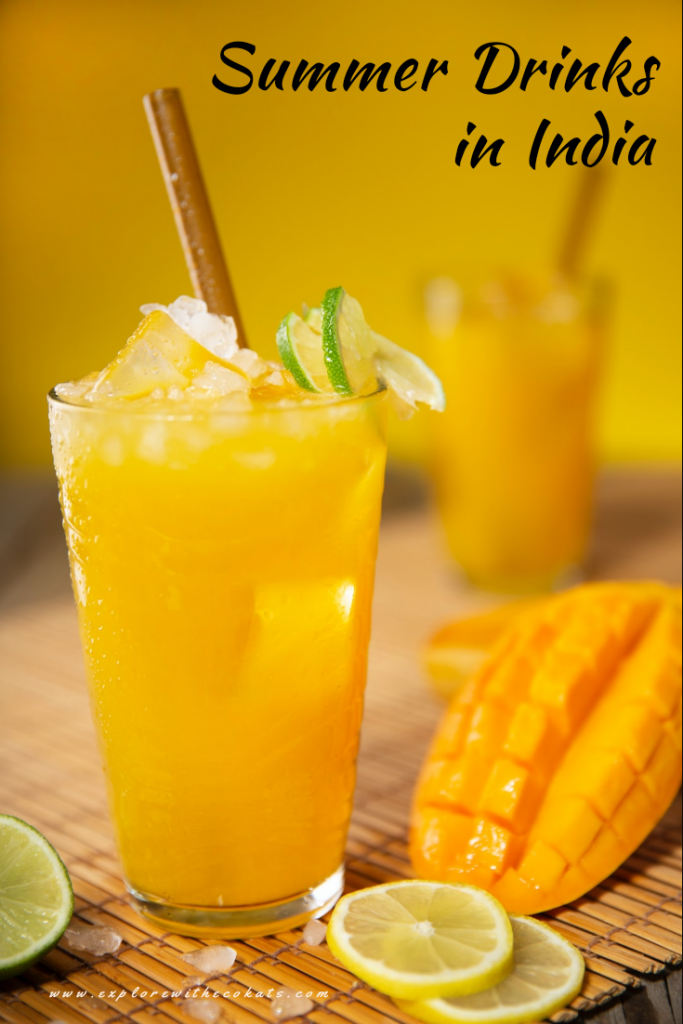
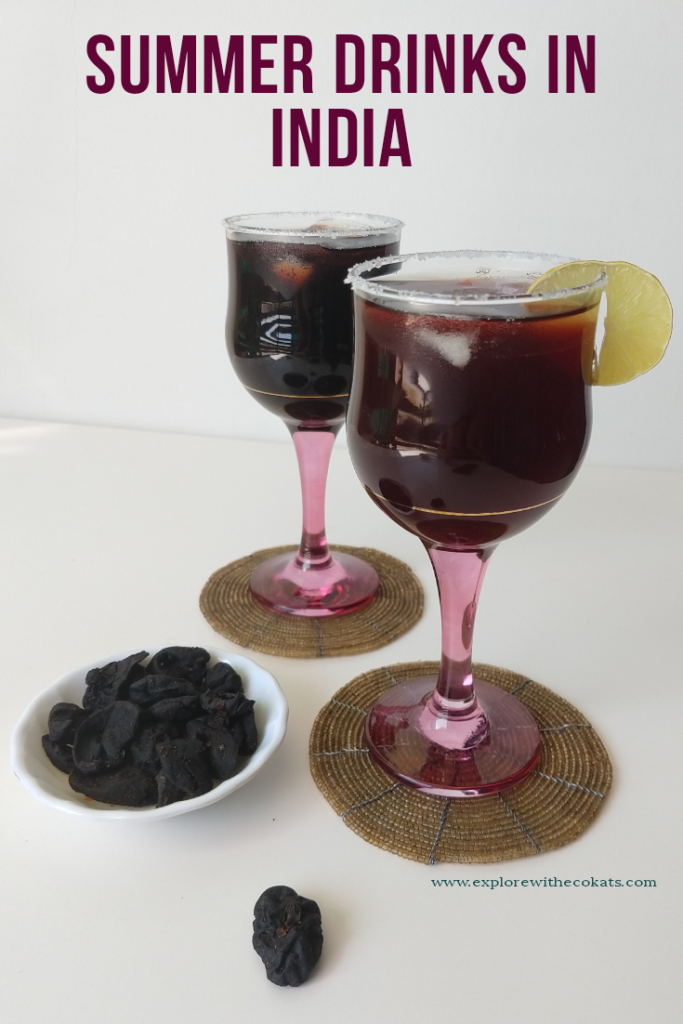

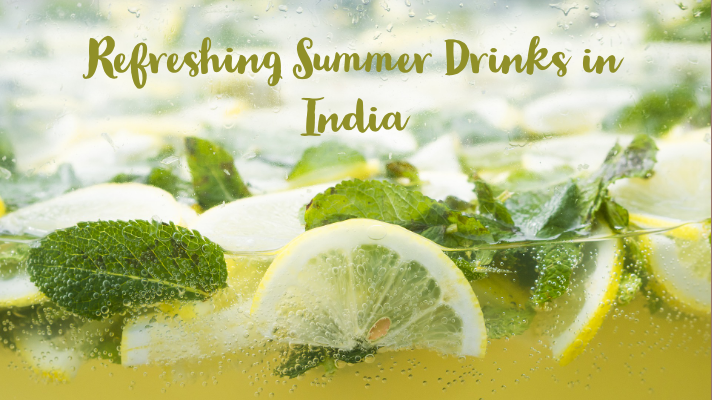
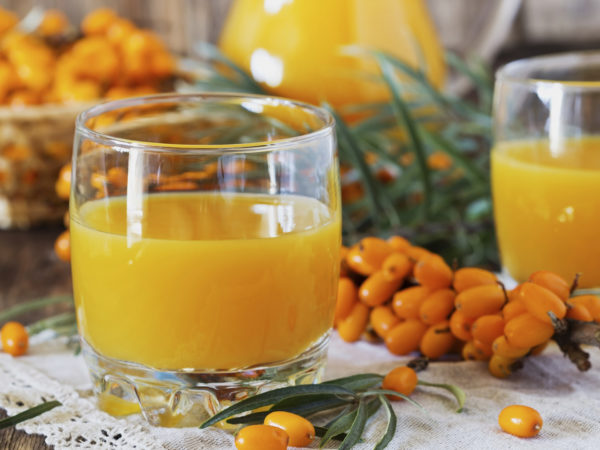
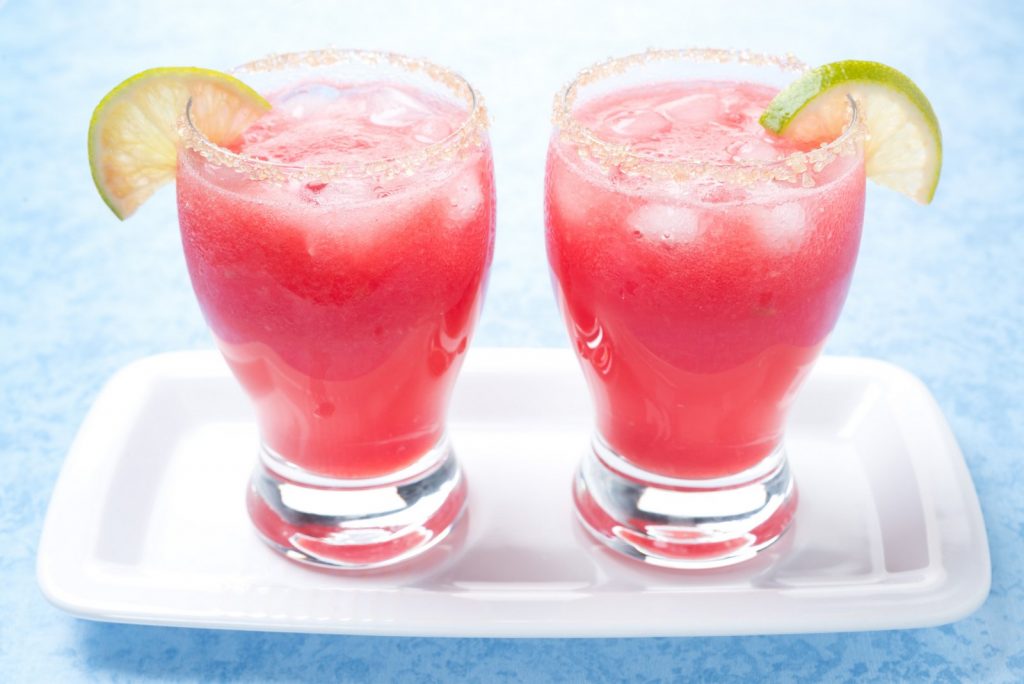
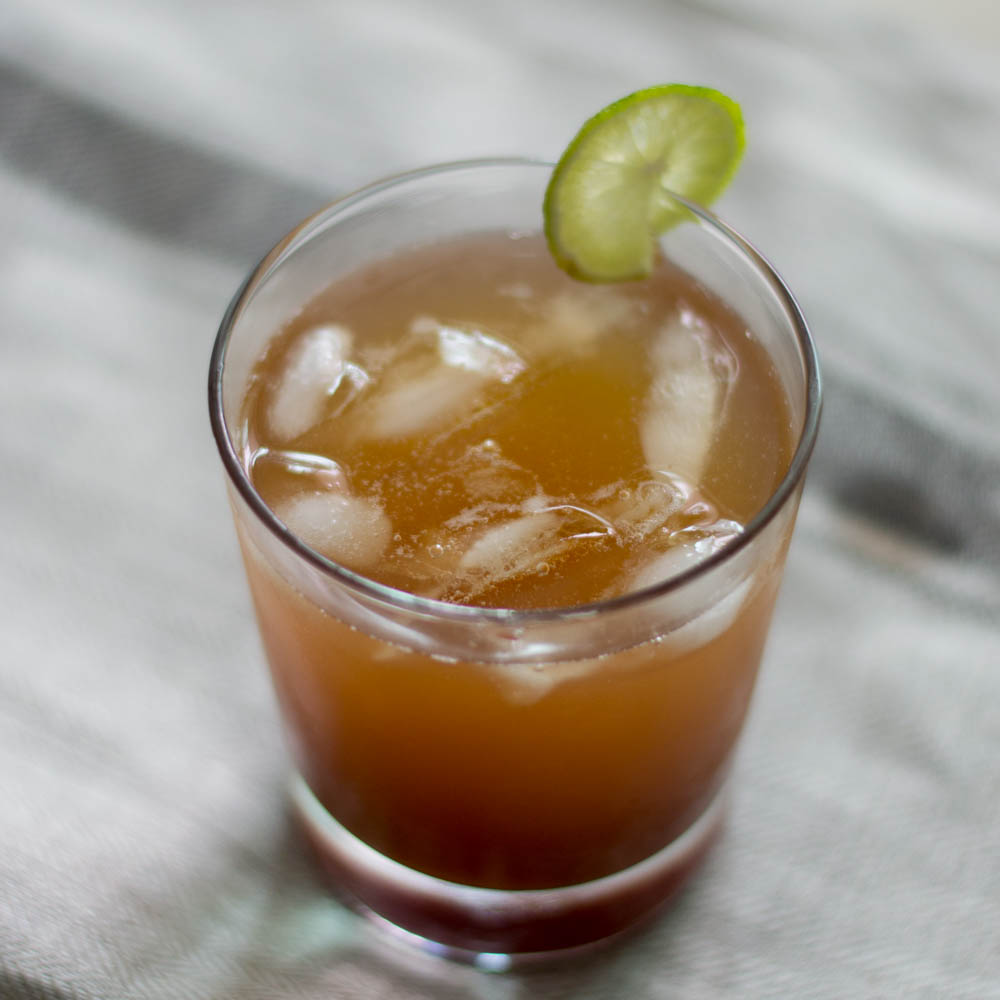
7 comments
Aah this is nostalgia. I love so many of them.
Aww I can imagine. Summers are incomplete without them 🙂
Wow this is great post loved reading it .it’s awesome. Now I want to try them all
Given the kind of summer we are experiencing right on, yes it’s worth trying them all, every day.
This made me incredibly thirsty! 🙂 That aam pora’r especially looks delicious. So many amazing fruit choices.
Thank you Rebecca. Summers in India are so harsh that we have to survive on this, literally!
[…] Gadre, Ketki. 2020. “Summer drinks in India – refreshing, tasty, healthy and full of nostalgia.” Explore with Ecokats. https://www.explorewithecokats.com/summer-drinks-in-india/. […]